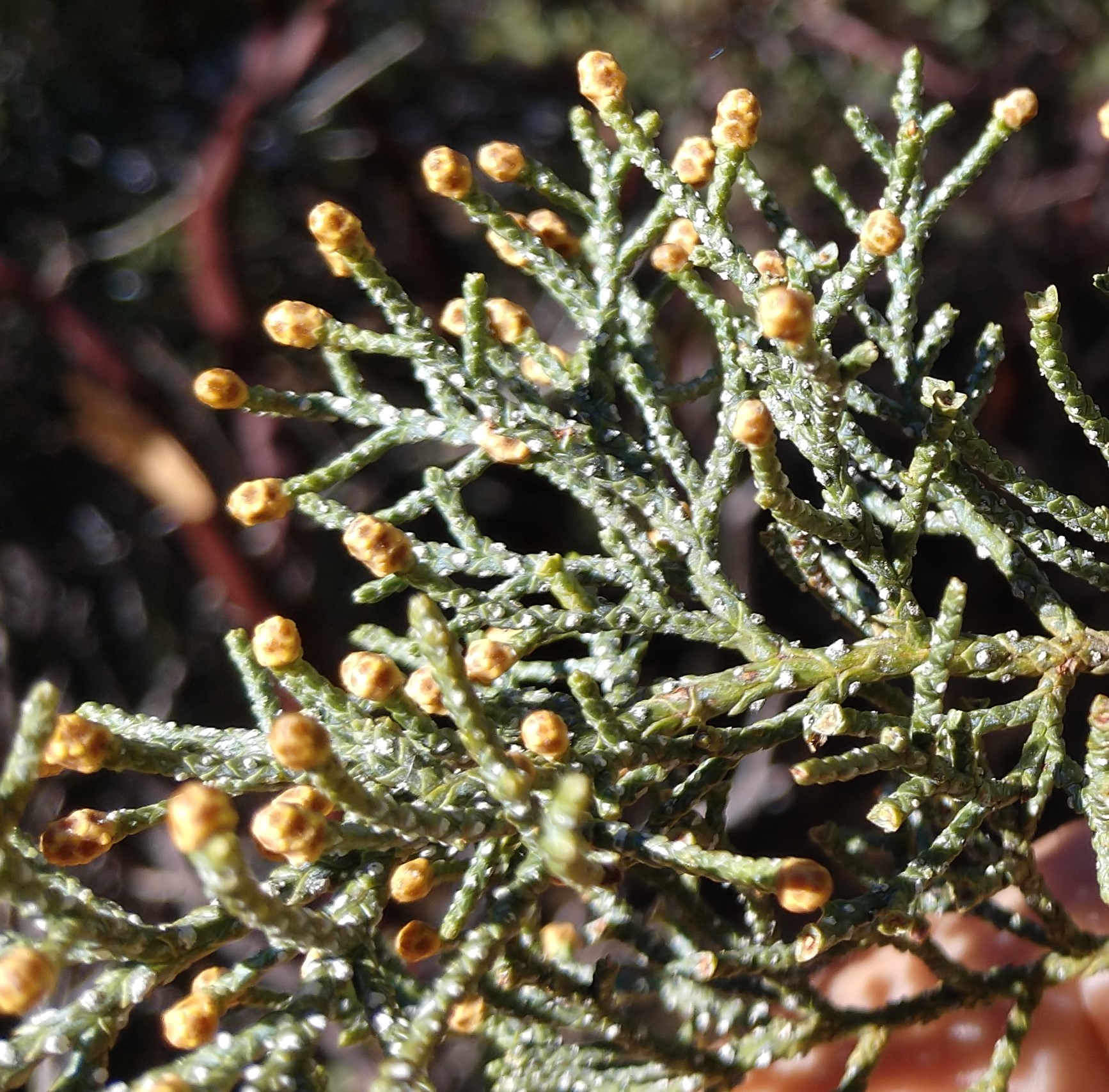 Pollen Allergies - February 5, 2020 Jeff Schalau, Agent, Agriculture & Natural Resources University of Arizona Cooperative Extension, Yavapai County Each year, various plant pollen sources trigger allergies causing discomfort to residents that are sensitive to them. An allergy is an abnormal reaction to a very small amount of a specific substance, called an allergen. According to the Asthma and Allergy Foundation of America (AAFA), fifty million people each year are affected by allergies caused by plant pollens and airborne particles of dust and animal dander and allergy sufferers spend $7 billion a year on doctor visits and allergy medication. Pollen is shed by many plants that flower seasonally (usually spring or fall). The plants with the greatest impact on allergies are wind-pollenated. These plants release pollen which is carried by wind (up to 20 miles) to the female flowers of their various species. This reproductive strategy leads to an environment virtually saturated with pollen for brief periods of the year. Pollens themselves are the tiny, male reproductive structures of flowering plants. Attractive, brightly colored flowers that are pollinated only by insects rarely cause allergies. Trees that can cause pollen allergies include: juniper, cypress, mesquite, mulberry, cottonwood, pecan, sycamore, desert broom, elm, walnut, oak, olive, and palm. Pines also produce pollen, but it is generally not considered allergenic. Offending grasses and herbaceous plants include: bermudagrass, johnsongrass, ryegrass, alfalfa, pigweed, cocklebur, lambs quarter, ragweed, and Russian thistle (tumbleweed). This is not an all-inclusive list, but it probably contains most of our worst allergenic pollen producers. The “allergen problem” can be been made worse by the introduction of exotic species to our landscapes and has resulted in various communities banning the planting of olive and mulberry trees. Most pollen will become an allergen if a susceptible person is exposed to a sufficient quantity of it. Pollen allergy symptoms often include nasal stuffiness, runny nose, sneezing, itching in the nose and throat, itchy, watery red eyes, fatigue, and headache. Changes in the weather directly influence the amount of pollen and how it will affect allergy sufferers. Rain dampens pollen and reduces its ability to flow through the air. A freeze can also slow down a tree's rate of producing pollen. Windy and warm weather can increase pollen amounts. It is sometimes useful for allergy sufferers to know which pollen species are present at any given time. This is done by conducting a pollen count. Pollen counts measure the amount of airborne allergens present in the air at the time of sample collection. Counts are reported as grains per cubic meter of air. Certified aeroallergen counters at many universities, medical centers and clinics often provide these counts on a volunteer basis. The American Academy of Allergy, Asthma and Immunology (AAAAI) has a network of pollen counters across the United States. Each counter works under the direction of an AAAAI member and the counter must first pass an intensive certification course. Counters use air sampling equipment to capture airborne pollens. Unfortunately, the only official observation station in Arizona is located at the Mayo Clinic in Scottsdale. As of January 19, 2020, tree pollen from juniper, alder, and ash were moderately high. Unfortunately, these readings are not likely to forecast airborne pollen present at the mid and higher elevations of Yavapai County. Data from AAAAI can be accessed on the Internet at: www.aaaai.org and a link is included with the online edition (see URL below). Another pollen forecasting resource is available, and while I often avoid recommending “dot com” resources because of commercial ties and the potential for lack of scientific objectivity, I think that www.pollen.com could be of value to readers suffering from pollen allergies. They have a network of collaborators that monitor pollen using standardized methods. They have maps and forecasts by zip code as well as customized products delivered via e-mail and smartphone. The following are a few recommendations for reducing pollen exposure: dry clothes in an automatic dryer rather than hanging them outside; consider limiting outdoor activities during the peak pollen seasons; stay inside during peak pollen times (from 10 a.m. to 4 p.m.); restrict outdoor activities during days with high winds and low humidity; shower after spending time outdoors to remove pollen from hair and skin; use air filters and clean regularly, or run an air conditioner and change the air filter frequently; and wear a dust mask when mowing the lawn, gardening, or raking leaves. Lastly, many pollen allergy sufferers find relief by seeking the advice of a trained medical professional. You can follow the Backyard Gardener on Twitter – use the link on the BYG website. If you have other gardening questions, call or email the Master Gardener help line in the Prescott (928-445-6590/prescottmg@gmail.com) or Camp Verde (928-554-8992/verdevalleymg@gmail.com) and be sure to include your name, address and phone number. Find past Backyard Gardener columns or provide feedback at the Backyard Gardener web site: http://cals.arizona.edu/yavapai/anr/hort/byg/.  Pollen cones forming on alligator juniper (Juniperis deppeanna) in Prescott, Arizona (Photo by Jeff Schalau, University of Arizona).
Pollen cones forming on alligator juniper (Juniperis deppeanna) in Prescott, Arizona (Photo by Jeff Schalau, University of Arizona).Additional Resources Tree Pollen and Allergies, University of Florida IFAS Extension sfyl.ifas.ufl.edu/archive/hot_topics/environment/tree_pollen_allergies.shtml National Allergy Bureau Pollen and Mold Report for Scottsdale, AZ, American Academy of Allergy Athsma & Immunology (AAAAI) pollen.aaaai.org/nab/index.cfm?p=allergenreport&stationid=234 Juniper Pollen, New Mexico State University Extension/Outreach aces.nmsu.edu/ces/yard/2006/031106.html |